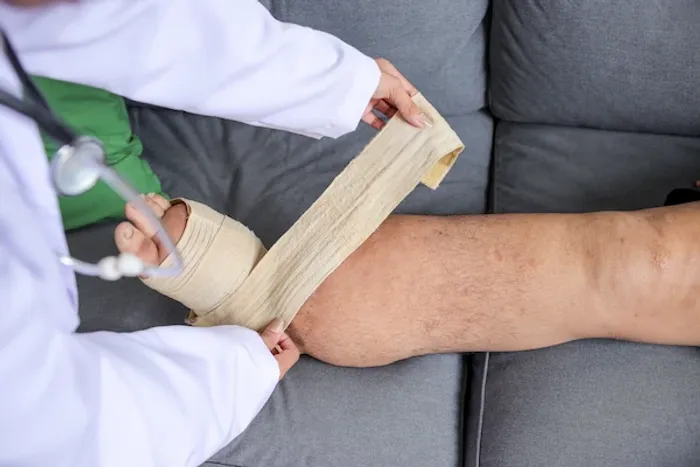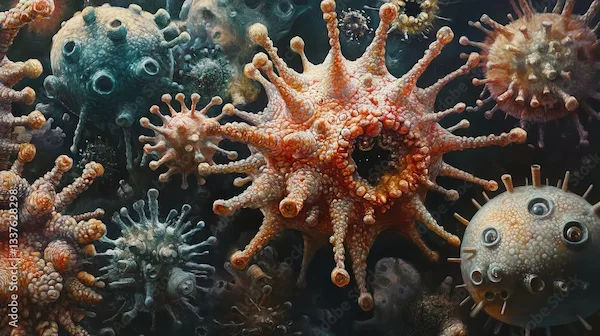Lymphatic Filariasis Symptoms Explained
Know about the lymphatic filariasis, common symptoms, causes, risks, and how it affects your health and prevention. Learn about the treatment conditions and useful tips for management.

Written by Dr. Dhankecha Mayank Dineshbhai
Reviewed by Dr. Md Yusuf Shareef MBBS
Last updated on 13th Aug, 2025

Introduction
Lymphatic filariasis, commonly known as elephantiasis, is a neglected tropical disease caused by parasitic worms. It affects the lymphatic system, leading to severe swelling in the limbs, genitals, and other body parts. While the condition is preventable and treatable, early detection is crucial to avoid long-term complications.
In this article, we’ll break down the symptoms, causes, and management of lymphatic filariasis in simple terms so you can stay informed and take the right steps for your health.
Consult a General Practitioner for Personalised Advice
What Is Lymphatic Filariasis?
Lymphatic filariasis is an infection caused by tiny thread-like worms (filariae) transmitted through mosquito bites. These worms live in the lymphatic system, which helps maintain fluid balance and fights infections. Over time, the worms damage the lymph vessels, leading to swelling, pain, and sometimes permanent disability.
Common Symptoms of Lymphatic Filariasis
The symptoms can vary depending on the stage of infection. Some people may not show symptoms for years, while others experience noticeable changes early on.
Early-Stage Symptoms
It includes:
1. Fever and Chills – Recurrent episodes of fever, often mistaken for malaria or other infections.
2. Swollen Lymph Nodes – Painful lumps in the groin, armpits, or neck.
3. Body Aches and Fatigue – General weakness and muscle pain.
4. Skin Rashes – Itchy or inflamed skin due to allergic reactions to the parasites.
Advanced-Stage Symptoms
It includes:
1. Lymphedema (Swelling) – Gradual swelling in the legs, arms, or genitals due to blocked lymph flow.
2. Elephantiasis – Severe, thickened skin and swelling, most commonly in the legs, resembling an elephant’s skin.
3. Hydrocele (in Men) – Swelling of the scrotum due to fluid buildup.
4. Recurrent Infections – Frequent bacterial infections in swollen areas due to weakened immunity.
How Does Lymphatic Filariasis Affect Health?
If left untreated, lymphatic filariasis can lead to:
- Chronic pain and disability due to extreme swelling.
- Social stigma because of visible deformities.
- Secondary infections like cellulitis can worsen the condition.
Causes and Risk Factors
Causes include:
- The disease spreads through mosquito bites, particularly from:
- Culex mosquitoes (common in urban areas).
- Anopheles mosquitoes (found in rural regions).
- Aedes mosquitoes (common in tropical climates).
Risk factors include:
- Living in or travelling to tropical/subtropical regions (Africa, Southeast Asia, Pacific Islands).
- Poor sanitation and stagnant water attract mosquitoes.
- Lack of protective measures like mosquito nets or repellents.
How to Manage Lymphatic Filariasis?
While there’s no cure for advanced cases, early treatment can prevent complications. Here’s what you can do:
Medical Treatment
The medical treatment includes:
- Antiparasitic Medications – Drugs like diethylcarbamazine (DEC) or ivermectin kill the worms.
- Antibiotics – For secondary infections.
- Surgery – In severe cases (e.g., hydrocele repair).
Self-Care and Lifestyle Changes
Self-care & lifestyle changes tips include:
1. Elevate Swollen Limbs – Helps reduce fluid buildup.
2. Practice Good Hygiene – Wash swollen areas daily to prevent infections.
3. Exercise Gently – Movement improves lymph flow.
4. Wear Compression Garments – Reduces swelling.
5. Avoid Tight Clothing – It can worsen fluid retention.
Prevention Tips
The preventive tips include:
- Use Mosquito Nets & Repellents – Especially in high-risk areas.
- Wear Long-Sleeved Clothing – Protects against mosquito bites.=
- Eliminate Stagnant Water – Prevents mosquito breeding.
- Mass Drug Administration (MDA) Programs – Some countries provide free preventive medicines.
When to See a Doctor?
Consult a healthcare provider if you:
- Notice unexplained swelling in limbs or genitals.
- Have recurrent fevers and fatigue.
- Experience skin infections in swollen areas.
Final Thoughts
Lymphatic filariasis is a serious but preventable condition. If you suspect symptoms like fever, chills and hydrocele or live in an affected region, early diagnosis through blood tests can help manage the disease before it progresses. Seek medical advice promptly.
Consult a General Practitioner for Personalised Advice
Consult a General Practitioner for Personalised Advice

Dr. Anand Ravi
General Physician
2 Years • MBBS
Bengaluru
PRESTIGE SHANTHINIKETAN - SOCIETY CLINIC, Bengaluru

Dr Syed Mateen Pasha
General Physician
2 Years • MBBS
Bengaluru
PRESTIGE SHANTHINIKETAN - SOCIETY CLINIC, Bengaluru
Dr. Gaddam Manoj
General Practitioner
1 Years • MBBS
Hyderabad
Aaradhya clinic, Hyderabad

Dr. D Bhanu Prakash
General Practitioner
10 Years • MBBS, AFIH, Advanced certificate in critical care medicine, Fellowship in critical care medicine
Hyderabad
Apollo 24|7 Clinic, Hyderabad

Dr. M L Ezhilarasan
General Practitioner
6 Years • MBBS
Visakhapatnam
Apollo 24|7 Clinic - Andhra Pradesh, Visakhapatnam
Consult a General Practitioner for Personalised Advice

Dr. Anand Ravi
General Physician
2 Years • MBBS
Bengaluru
PRESTIGE SHANTHINIKETAN - SOCIETY CLINIC, Bengaluru

Dr Syed Mateen Pasha
General Physician
2 Years • MBBS
Bengaluru
PRESTIGE SHANTHINIKETAN - SOCIETY CLINIC, Bengaluru
Dr. Gaddam Manoj
General Practitioner
1 Years • MBBS
Hyderabad
Aaradhya clinic, Hyderabad

Dr. D Bhanu Prakash
General Practitioner
10 Years • MBBS, AFIH, Advanced certificate in critical care medicine, Fellowship in critical care medicine
Hyderabad
Apollo 24|7 Clinic, Hyderabad

Dr. M L Ezhilarasan
General Practitioner
6 Years • MBBS
Visakhapatnam
Apollo 24|7 Clinic - Andhra Pradesh, Visakhapatnam




